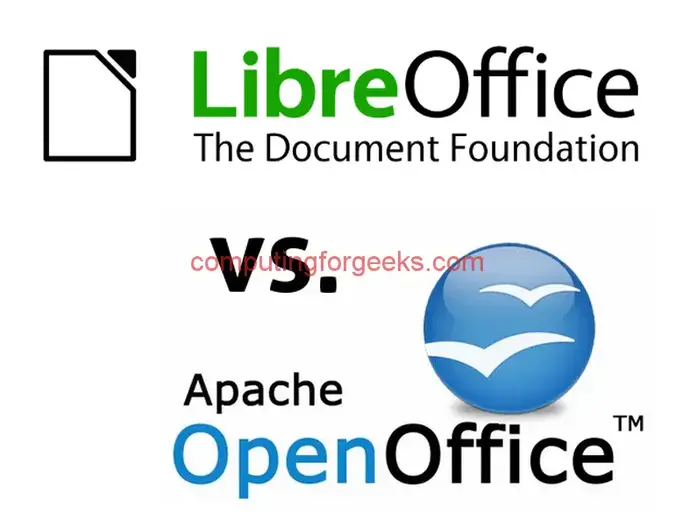Learn how to – Install OpenOffice & LibreOffice on macOS.
Hi good people. On our last article about OpenOffice and LibreOffice, we looked at how to install OpenOffice on Kali Linux, Ubuntu/Debian, and CentOS/Fedora. In this post though, we’ll take a closer look at how to Install OpenOffice and LibreOffice on macOS.
What’s OpenOffice and LibreOffice
LibreOffice and OpenOffice are the best freely available, fully-featured office productivity suite. They can open and save documents in many other formats, including those used by several versions of Microsoft Office.

OpenOffice components
Among the features and tools provided by OpenOffice are:
- Writer a word processor you can use for anything from writing a quick letter to producing an entire book.
- Calc a powerful spreadsheet with all the tools you need to calculate, analyze, and present your data in numerical reports or sizzling graphics.
- Impress the fastest, most powerful way to create effective multimedia presentations.
- Draw lets you produce everything from simple diagrams to dynamic 3D illustrations.
- Base lets you manipulate databases seamlessly. Create and modify tables, forms, queries, and reports, all from within Apache OpenOffice.
- Math lets you create mathematical equations with a graphic user interface or by directly typing your formulas into the equation editor.
LibreOffice Features
LibreOffice is a freely available, fully-featured office productivity suite. Its native file format is Open Document Format (ODF). Turning to the side of LibreOffice, as of the recent release which is version 6.0.
- A new ePUB export filter has been added, so you can save your documents as e-books.
- The user interface customization and special character dialogs have been redesigned.
- OpenPGP keys can be used to sign documents on all desktop platforms (with experimental encryption support).
LibreOffice Components
- Writer (word processor) – Writer is a feature-rich tool for creating letters, books, reports, newsletters, brochures, and other documents
- Calc (spreadsheet) – Calc has all of the advanced analysis, charting, and decision making features expected from a high-end spreadsheet
- Impress (presentations) – Impress provides all the common multimedia presentation tools, such as special effects, animation, and drawing tools
- Draw (vector graphics) – Draw is a vector drawing tool that can produce everything from simple diagrams or flowcharts to the 3D artwork.
- Base (database) – Base provides tools for day-to-day database work within a simple interface
- Math (formula editor) – Math is the LibreOffice formula or equation editor.
Install OpenOffice and LibreOffice on MacOS
This installation will use macOS brew package management tool to install both LibreOffice and OpenOffice on macOS. The Prerequisite for this is to Install homebrew.
Installing Homebrew on MacOS
Homebrew project is titled The missing package manager for macOS. It is an ultimate package manager for MacOS. To Install Homebrew on MacOS, run the commands below on your Terminal.
/usr/bin/ruby -e "$(curl -fsSL https://raw.githubusercontent.com/Homebrew/install/master/install)"If you feel like you no longer need Homebrew, you can uninstall it by running.
/usr/bin/ruby -e "$(curl -fsSL https://raw.githubusercontent.com/Homebrew/install/master/uninstall)"Installing Xcode on MacOS
After installation is done. Then install Xcode which provides developers a unified workflow for user interface design, coding, testing, and debugging. Use the link Install Xcode. Click the View in Mac Store button to install it.
Partial installation on CLI is done running.
sudo xcode-select --install
sudo xcodebuild -license acceptInstalling LibreOffice with brew
Now that you have all the necessary tools needed. Proceed to install LibreOffice with brew cask. Homebrew-Cask extends Homebrew and brings its elegance, simplicity, and speed to macOS applications and large binaries alike.
$ brew search libreoffice
==> Searching local taps...
==> Searching taps on GitHub...
caskroom/cask/libreoffice
caskroom/cask/libreoffice-language-pack
caskroom/versions/libreoffice-rc
caskroom/versions/libreoffice-still
==> Searching blacklisted, migrated and deleted formulae...
From the search, we can see libreoffice and libreoffice-language-pack packages. Install it with:
brew install libreoffice libreoffice-language-packor
brew cask install libreoffice libreoffice-language-packInstalling OpenOffice with brew
Search to confirm package.
$ brew search openoffice
==> Searching local taps...
==> Searching taps on GitHub...
caskroom/cask/openoffice
==> Searching blacklisted, migrated and deleted formulae...Then install it using:
brew install openofficeor
brew cask install openofficeLaunching OpenOffice and LibreOffice
After a successful process of Install OpenOffice and LibreOffice on MacOS Sierra. You can search for any of its components from MacOS native Spotlight Search tool and launch them like any other application.
Similar guides:
Leave a Reply
You must be logged in to post a comment.